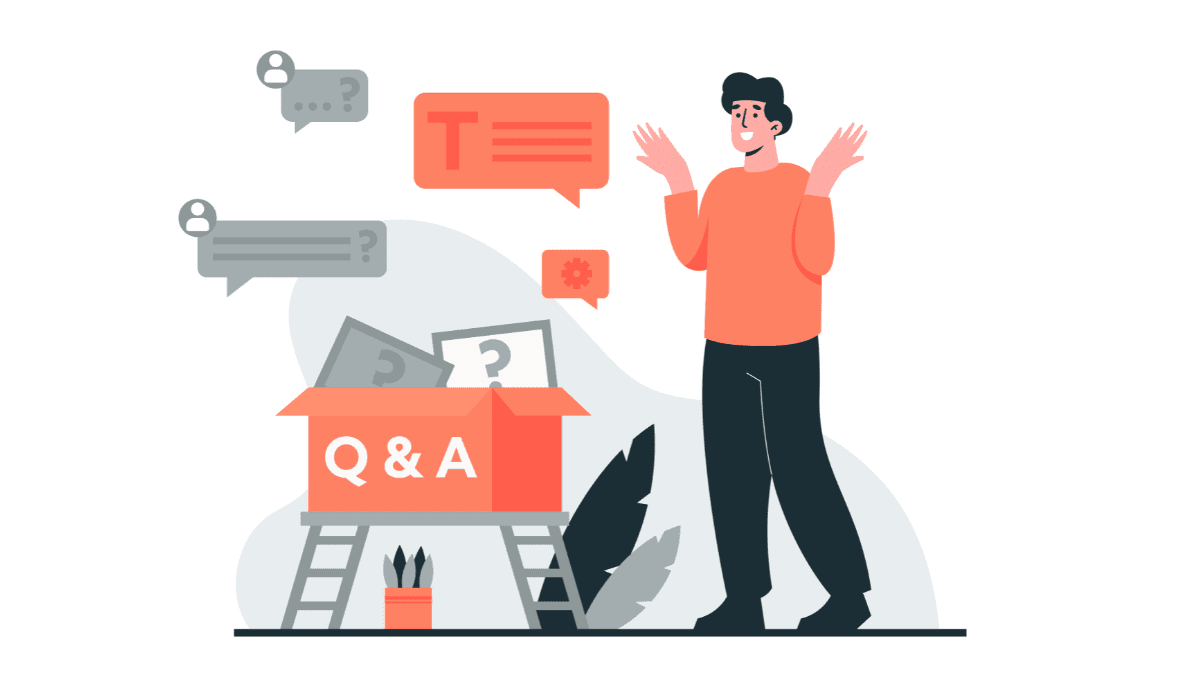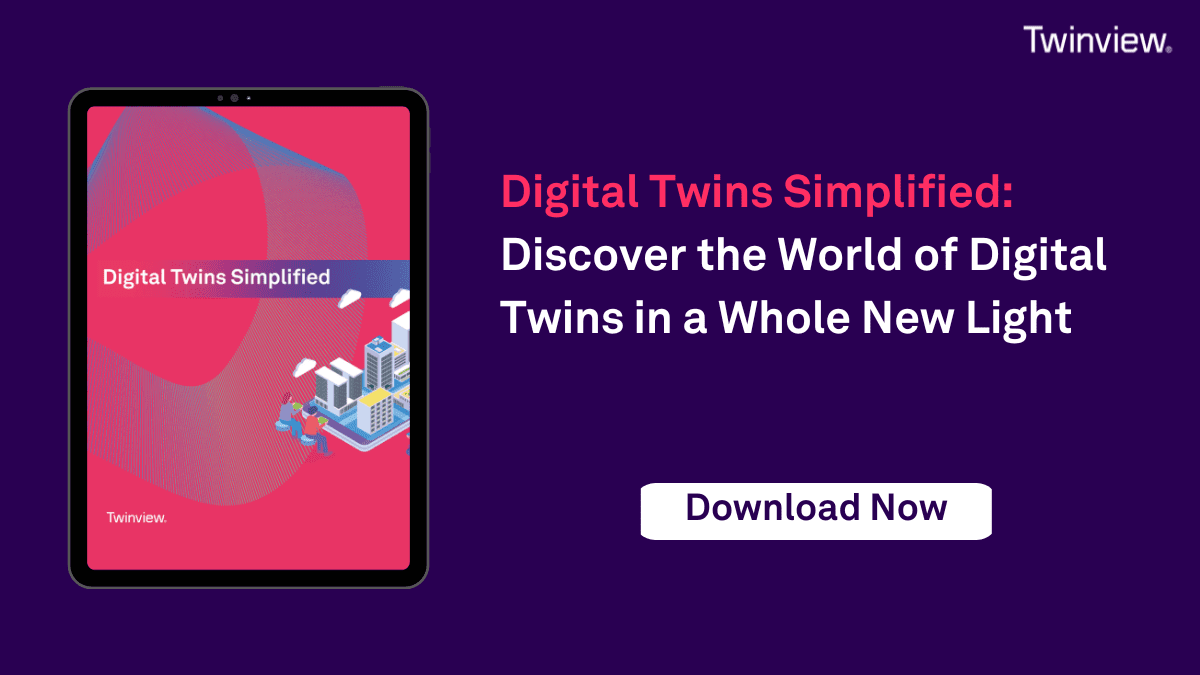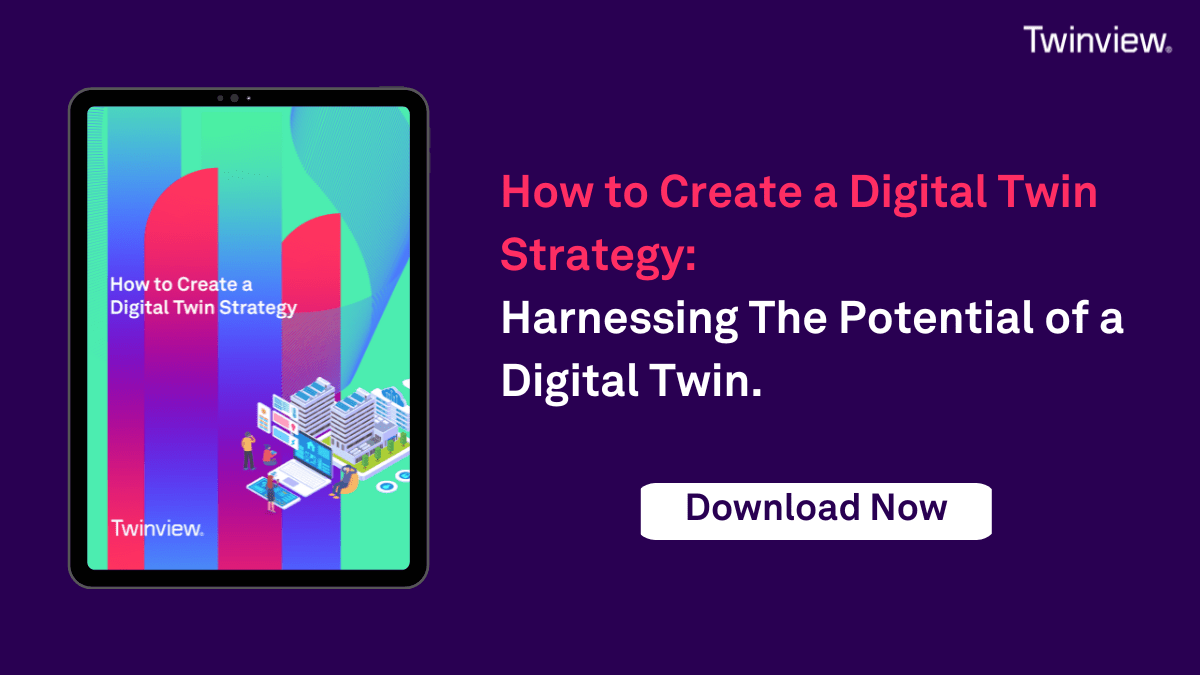15 Jul 2023 | Industry Insights
Digital Twins for Buildings: FAQs

Digital Twins for Buildings: FAQs
The emergence of digital twin technology has been one of the most exciting developments of our generation. In this piece, we'll address some of the most frequently asked questions regarding digital twins, both in a general sense and as they relate specifically to budlings. By the end of this article, you should better understand what digital twins are, how they work, and why they're becoming an increasingly important technology in various industries.
Q: What are Digital Twins?
A: Digital Twins are virtual replicas of physical assets, processes, or systems that mimic their real-world counterparts. They are equipped with sensors and connected to IoT networks, enabling the collection of real-time data and insights.
Q: What can digital twins be used for?
A: A digital twin can be used to replicate real-world processes to collect data that enables us to predict how they will perform in real time. By integrating the Internet of Things (IoT), artificial intelligence (AI), and machine learning (ML), digital twins can improve business outcomes, drive innovation, and improve performance.
Q: How do Digital Twins work?
A: Digital twins connect to their physical counterparts via sensors connected to the systems of assets within them. In the built environment, a fully coordinated 3D digital model is created during the construction process. Once a project is completed, a model is handed over to the building owners or developers. Twinview is a browser-based digital twin platform that allows building owners and operators to utilise this data by providing real-time analytical insights from connected assets, sensors, and systems in an operational building.
Q: What are the benefits of implementing Digital Twins?
A: There are many benefits associated with digital twins, depending on when and where they are used. Some of the most common benefits of digital twins in the built environment include monitoring performance and predicting maintenance work, offering real-time insights into asset performance, accessing all a building's data on a dashboard and detecting potential issues before they happen.
Q: Why are digital twins important?
A: Digital twins help to improve a company's data-driven decision-making processes by providing a greater understanding of their physical assets during it’s lifespan. By being able to respond to changes in its usage and environment over time, businesses can constantly improve their building operations, reduce their energy waste and save time and money.
Q: Are Digital Twins only relevant for specific industries?
A: No, Digital Twins have versatile applications across various industries, including manufacturing, healthcare, construction, energy, transportation, and more. Their potential for enhancing efficiency and innovation is vast and adaptable.
Q: Can Digital Twins help with predictive maintenance?
A: Absolutely! One of the significant advantages of Digital Twins is their ability to enable predictive maintenance. By analysing real-time data, they can anticipate potential issues, schedule maintenance proactively, and avoid costly downtime.
Q: How can digital twins improve facility management?
A: Digital twins can help facility managers track and monitor the performance of various systems and assets within a building. They can also help predict when maintenance work is required and provide real-time insights into asset performance. By having access to all of a building's data on a dashboard and via innovative navigation tools, facility managers can detect potential issues before they happen and take action to prevent them.
Q: Can digital twins help with energy efficiency?
A: Yes, digital twins can help with energy efficiency by providing real-time insights into a building's energy usage. By tracking energy consumption and identifying areas where energy is being wasted, building owners and operators can take action to improve energy efficiency. Digital twins can also help optimise the use of heating, ventilation, and air conditioning (HVAC) systems, which can have a significant impact on a building's energy consumption.
Q: Is implementing Digital Twins a complex process?
A: While implementing Digital Twins may require some initial setup and integration with existing systems, working with experienced partners like Twinview can simplify the process. Our team ensures a seamless and tailored implementation for your specific needs.
Q: How do Digital Twins contribute to sustainability?
A: Digital Twins optimise resource utilisation, reduce waste, and support sustainable practices. By identifying inefficiencies and optimising processes, they help organisations minimise their environmental impact and drive sustainability initiatives.
Q: How does the use of digital twins impact building design and construction?
A: The use of digital twins can have a significant impact on building design and construction. By creating a fully coordinated 3D digital model during the construction process, architects, engineers, and contractors can identify and resolve potential issues before construction begins. This can help reduce construction time and costs and improve the quality of the finished building. Once a project is completed, the digital twin can be seamlessly handed over to track the performance of various systems and assets within the building.
Q: Can Digital Twins support innovation in my business?
A: Absolutely! Digital Twins foster innovation by providing a deeper understanding of operations, facilitating data-driven experimentation, and enabling the development of advanced technologies and solutions.
Q: Are Digital Twins secure?
A: At Twinview, security is a top priority. We implement robust security measures to safeguard data, and our systems are designed to meet industry standards and compliance requirements, ensuring the utmost protection of your information.
Q: How can I get started with Digital Twins for my organisation?
A: Getting started is easy! Reach out to our team at Twinview, and we'll guide you through the process. We'll understand your specific requirements and design a customised Digital Twin solution tailored to your needs.
Digital twin technology is a game-changer in the built environment. With the power to turn building data into building intelligence, Twinview enables users to make smarter decisions and streamline their building data effectively. By providing a comprehensive platform to track, interact, adapt, and measure your building's performance, Twinview delivers measurable value and optimises your building's overall performance. Twinview is committed to delivering value and making a positive difference to your business. Book a demo to find out more.

eBooks
Digital Twins Simplified
Discover the world of digital twins in a whole new light with our eBook, Digital Twins Simplified! Specifically tailored for construction enthusiasts and professionals, this comprehensive guide demystifies the concept of digital twins, breaking it down into easily digestible insights. Uncover the transformative potential of this cutting-edge technology as you explore real-world applications, benefits, and strategies to revolutionize your construction projects.
Read more

eBooks
How to Create a Digital Twin Strategy
In the era of digital transformation, businesses across various industries are leveraging innovative technologies to enhance their operations and drive growth. One such groundbreaking technology is Digital Twinning. However, to truly harness its potential, a well-thought-out digital twin strategy is vital. This is where our latest PDF - "How to Create a Digital Twin Strategy", part of the Demystifying Digital Twins series, comes into play. This detailed guide is designed to provide you with a clear roadmap to establish a successful digital twin strategy that can significantly impact your business outcomes.
Read more

Webinars & Videos
Demystifying Digital Twins: Understanding the value of Digital Twins in Building Operations
In today's rapidly evolving technological landscape, digital twins have emerged as a game-changing concept with the potential to revolutionise the built environment. A digital twin is a virtual representation of a physical product, system, or process, enabling simulation, integration, testing, monitoring, and maintenance. In this episode, we will explore the transformative capabilities of digital twins and their implications for the architecture, engineering, construction, and operations (AECO) industry. By delving into real-world examples and drawing parallels with sectors such as automotive and aerospace, we will uncover the immense value that digital twins can bring. Additionally, we will provide actionable insights for organisations looking to harness the power of digital twins.
Read more
Related insights

eBooks
Digital Twins Simplified
Discover the world of digital twins in a whole new light with our eBook, Digital Twins Simplified! Specifically tailored for construction enthusiasts and professionals, this comprehensive guide demystifies the concept of digital twins, breaking it down into easily digestible insights. Uncover the transformative potential of this cutting-edge technology as you explore real-world applications, benefits, and strategies to revolutionize your construction projects.
Read more

eBooks
How to Create a Digital Twin Strategy
In the era of digital transformation, businesses across various industries are leveraging innovative technologies to enhance their operations and drive growth. One such groundbreaking technology is Digital Twinning. However, to truly harness its potential, a well-thought-out digital twin strategy is vital. This is where our latest PDF - "How to Create a Digital Twin Strategy", part of the Demystifying Digital Twins series, comes into play. This detailed guide is designed to provide you with a clear roadmap to establish a successful digital twin strategy that can significantly impact your business outcomes.
Read more

Webinars & Videos
Demystifying Digital Twins: Understanding the value of Digital Twins in Building Operations
In today's rapidly evolving technological landscape, digital twins have emerged as a game-changing concept with the potential to revolutionise the built environment. A digital twin is a virtual representation of a physical product, system, or process, enabling simulation, integration, testing, monitoring, and maintenance. In this episode, we will explore the transformative capabilities of digital twins and their implications for the architecture, engineering, construction, and operations (AECO) industry. By delving into real-world examples and drawing parallels with sectors such as automotive and aerospace, we will uncover the immense value that digital twins can bring. Additionally, we will provide actionable insights for organisations looking to harness the power of digital twins.
Read more
Book your one-on-one appointment with one of our specialists.
info@twinview.com
+44 (0)844 800 6660
London
24 Greville Street
Farringdon
London
EC1n 8SS
Newcastle
Spaceworks
Benton Park Road
Newcastle upon Tyne
NE7 7LX

